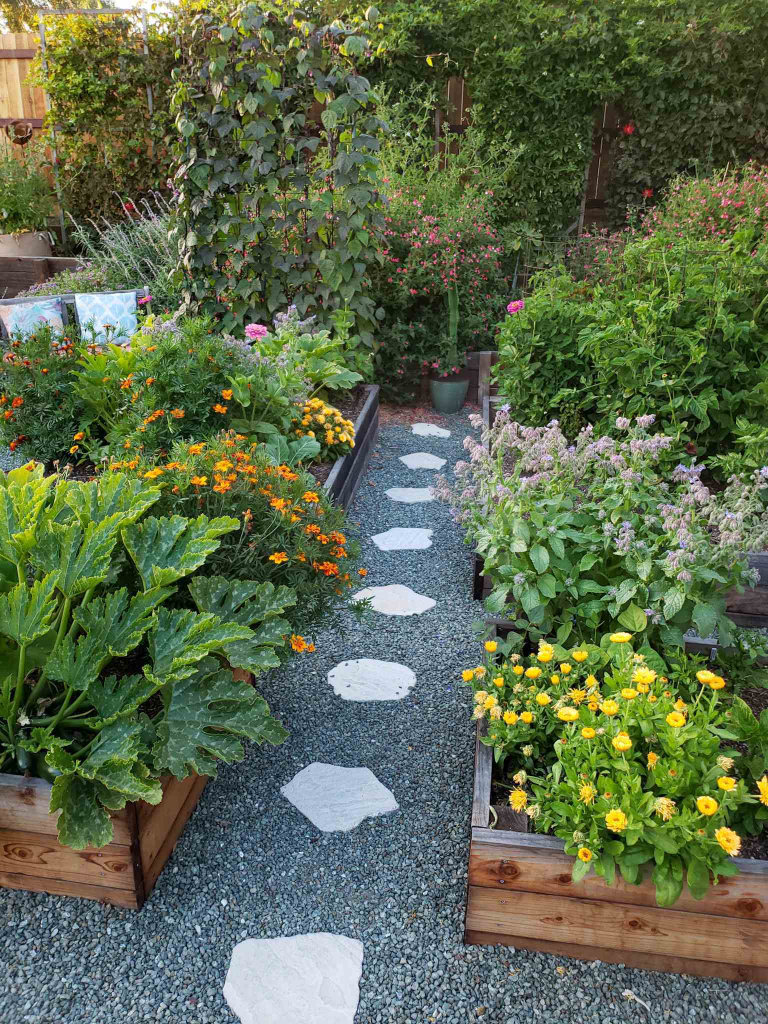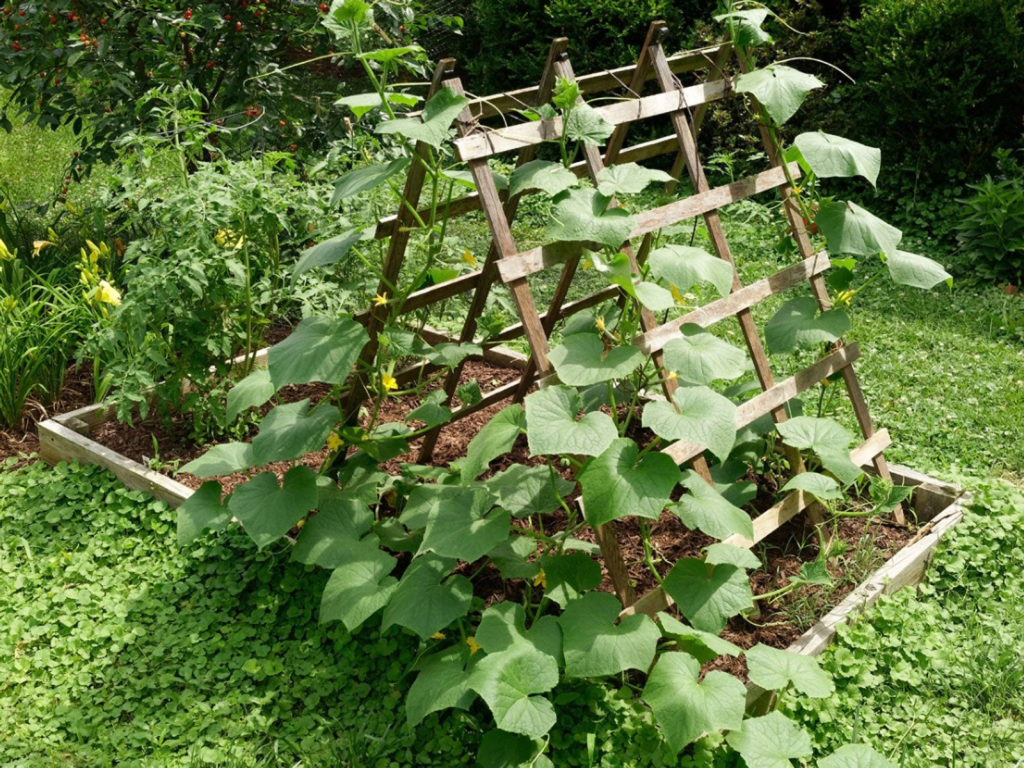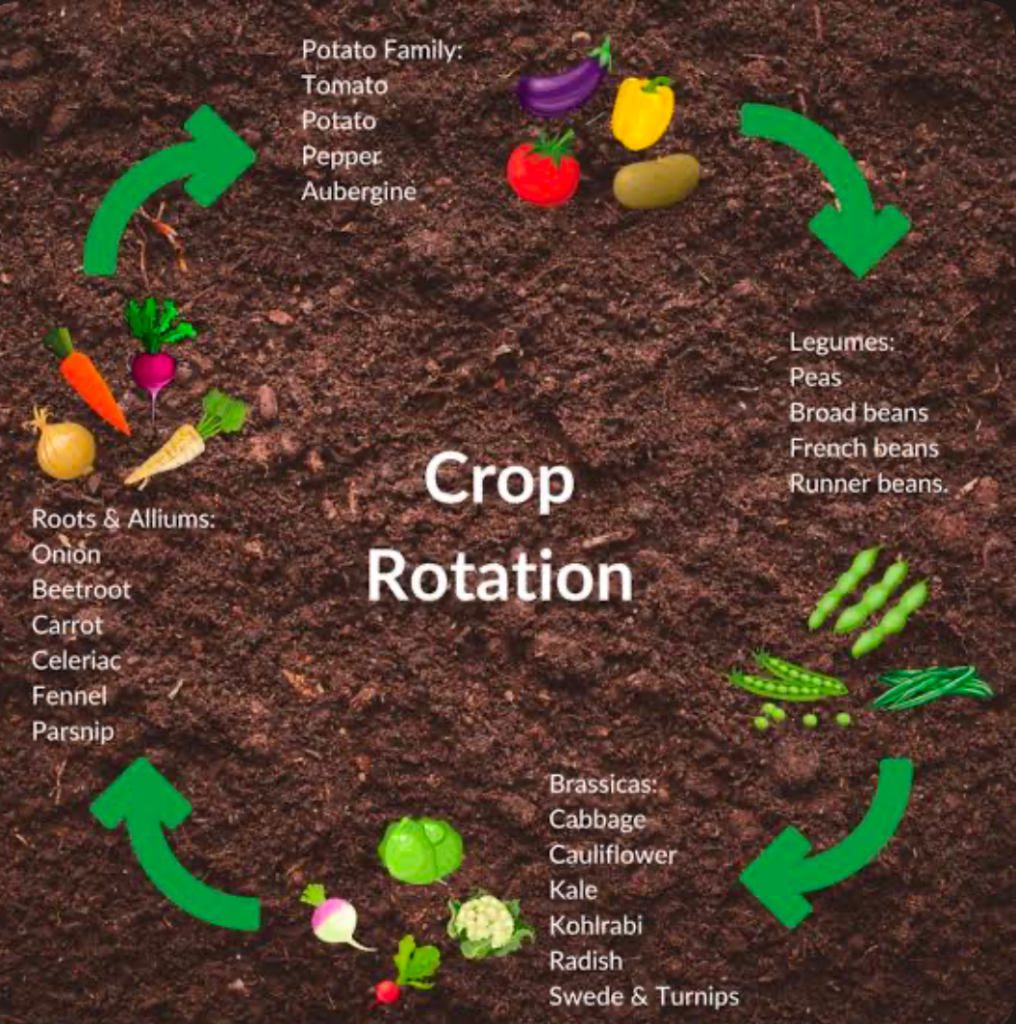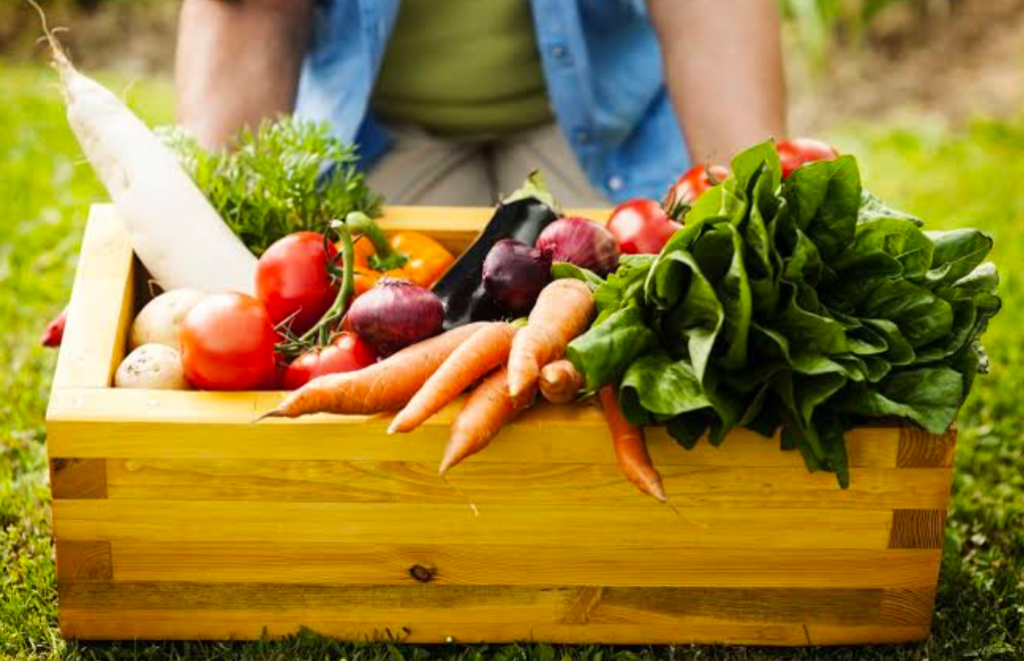Discover how raised bed gardening offers a space-saving and productive approach while utilizing companion planting to enhance growth and protect plants naturally.
Raised Bed Garden Design & Companion Planting Basics
Are you looking for space-saving garden ideas to maximize your compact outdoor area? These raised bed gardening tips would help you achieve your goal without compromising on having a productive home garden.
Raised bed gardening combines traditional techniques to enhance growth and naturally protect plants in a beginner vegetable garden.
In this overview, you’d see how to use raised bed gardening and companion planting to improve your garden’s health and look in a cramped space.
Understanding Raised Bed Gardening Advantages

Using raised garden beds to plant your flowers and vegetables is one of the many traditional easy gardening methods.
Before digging deeper into this raised bed setup guide, let’s review its benefits so you’ll better appreciate the technique.
Benefits of Raised Beds
- Soil Control: There’s better aeration for nutrient absorption because it controls the soil usage
- Improved Drainage: It encourages a better drainage system for water flow to prevent leaching, waterlogging, and root rotting.
- Easy Weed Management: The elevated sides form a barrier that suffocates weed growth. It also discourages pest activity as plants growing on raised beds are more challenging to reach.
- Low-Maintenance: Overall, all benefits of raised bed make it the best option for efficient small-scale gardening.
So, let’s discuss how to gain these benefits in your low-maintenance gardens starting with the basics.
Choosing the Right Location and Materials

Because these durable raised bed ideas is all about optimizing space, you must choose a prime spot and use the best garden bed materials.
There are certain essentials to consider when choosing the best spot for raised garden beds.
Firstly, note the lighting angles and sunlight direction to determine the best position for plant growth. Next, you must select a well-drained spot to prevent waterlogging and optimize your drainage system.
Thirdly, select the best materials for your DIY garden setup. You can use untreated wood for the bed and borders or explore modern and eclectic themes using materials like metal and stone for longer lasting raised beds.
Author’s Note: Check out our post Raised Bed Garden Layout for in-depth spacing, height & path width design choices when building raised beds.
Soil Preparation for Healthy Plant Growth

Once you set up your borders in a prime spot, it’s time to prepare your soil for healthy plant growth. Feed your beds with an organic garden soil mix instead of synthetic fertilizers because it’s nutrient-rich, accessible, and beneficial long-term.
If you can’t buy an organic fertilizer product, you can try DIY options like animal-matter, plant-matter or compost for raised beds treatment.
Knowing what to use is only one step, you also need to know how to use them for optimal results. Here are some garden soil mix tips to guide you through your application:
Materials

Avoid using fresh wood chips and plastic for your base layer. Instead choose materials that can absorb moisture and facilitate good drainage.
Quality Control
Test the soil mix before continuing with the layering.
Author’s Note: Check out the more accurate Mail-in Lab MySoil Soil Test Kit or the Convenient At-Home Rapitest Soil Test Kit for diagnosing nutrient deficiency and preparing your soil for the planting season!
Layering
You’re going to form a pyramid of three layers for a raised bed. Start with the coarse bits like a branch or log, then layer the middle with compost or other granular soil materials before topping your bed with your best quality soil.
Post-Mixing Practices
Water, Mulch and fertilize your raised garden bed to improve your planting yield.
After prepping your soil, it’s time to plant the seeds.
Companion Planting Fundamentals

Organic garden strategies like companion planting are making a comeback because of their extensive benefits ranging from surface level to deep-rooted effects.
When you combine beneficial plant pairs in one garden bed, you lean on nature to eliminate common problems and enhance your gardening experience. For example certain plants enhance flavor profiles while others deter pests and attract beneficial insects. So, companion planting is basically creating a symbiotic relationship among various species like pairing natural pest control plants with pest-attractive vegetation.
Check out this companion planting guide for common examples.
Best Plant Pairings for Raised Beds

For a better understanding, this section covers different categories like flowering plants, food crops, and vegetable companion pairs.
You got a teaser of companion planting ideas but now it’s time to explore the best garden combinations even deeper.
| Tomato + Basil | Basil’s aroma infuses flavor in tomatoes while repelling pests with its strong aroma. |
| Vegetable + Marigold | Marigolds repel vegetable plant pests like aphids. |
| Carrot + Onions | Onion scent repels carrot root pests like flies. |
| Corn + Beans | Corn is a tall plant while beans is a creeper, so it provides support for the beans plants. |
| Radish + Cucumbers | Radish distracts cucumber beetles from attacking your cucumbers. |
Achieving a pest-resistant garden takes dedication and careful planning, so you must go further in research to know the Don’ts of the technique.
There are plant pairings that would ruin a perfect raised bed planting plan, and you must know how to avoid them.
Plants to Avoid Pairing in Raised Beds

When you pair bad companion plants you’ll achieve the opposite of your goal. Instead of attracting beneficial pollinators and insects you’d welcome pests to your garden and cause stunted growth for your plant.
So, pay attention to these common garden mistakes to avoid ruining your raised bed design and companion planting strategy.
Since we can’t list all incompatible plant pairs, we figured giving you tips on identifying them is a better tool.
To truly understand how two or more plants can be wrong for each other, you must first identify their needs and characteristics.
Know when a plant species releases toxins that are harmful to other plants in the environment and how to balance that.
- Keep tall plants behind shorter ones
- Add herbs and fragrance flowering plants to attract beneficial insects and repel pests
- Add trap crops to distract pests from your other plants
For example, onions and garlic absorb so much nutrients and stunt the growth of bean plants while cabbages block sunlight from reaching nightshade plants like tomatoes.
Dills will alter your carrot’s flavor while corn and tomatoes which both need heavy nutrients will compete for absorption leading to the stuntedness of one over the other.
Incorporating hardware like vertical supports and trellises is also another way of ensuring healthy crop planning.
Author’s Note: Check out our post on Essential Gardening Tools for Raised Beds for a comprehensive guide to the right gear specifically for raised beds.
Incorporating Vertical Supports and Trellises\

If you’re wondering whether vertical supports can fit into small space gardening, the answer is yes.
Trellises and other vertical planting frames are good climbing plant supports that reduce the strain on your tall plants. So, here, we’ll explore vertical gardening tips using natural plant arrangement and trellises.
| Vertical Planting | Treliss |
| Use tiered planters or hanging baskets Layer tall plants behind crawling or shorter ones | Buy or DIY depending on your budget and garden theme Setup the trellis behind your raised garden bed Plant climbers by your trellis so that the vines will grow upward |
Some raised bed trellis ideas you can try include wired support, wooden stakes, A-frames, cylinders, and string cords.
Watering and Mulching Techniques

Once you’ve set up a good raised bed garden plan, your next project is to secure your irrigation with practical and smart moisture retention methods. Already, you’ve set the foundation for success with your layering materials and design but let’s seal the deal with these raised bed watering guide tips.
Watering
Like a regular flat bed garden needs, your raised bed garden also requires the same level of moisture from deep watering. But because of its layout, you need specific irrigation techniques to prevent waterlogging, and ensure even and direct and steady water distribution.
Use these drip irrigation tips for maximum efficiency:
- Run your drip tubes between your raised bed layout and connect them with fittings like caps, elbows or tees.
- Set up a main line of ½ inches from your water source to your bed’s edge.
- Add smaller lines of about ¼ inch per planting row with fittings.
- Use an emitter to regulate the flow rate
Mulching

You can also rely on traditional mulching for gardens to retain moisture, stunt weed growth and protect your plant roots especially in the winter season. Use organic mulch materials like grass clippings, shredded leaves, straw, and compost to infuse nutrients into the soil while protecting it from seasonal damage.
Seasonal Crop Rotation for Soil Health
Pro gardeners know that the secret to having a year round bloom is seasonal garden planning, and you’re about to join that elite club. When you plant seeds based on their peak growing season, you collaborate with nature and reap a bountiful harvest .
So, let’s see some crop rotation basics to help you start your seasonal plan.
Crop Rotation

You can rotate your crops by different metrics ranging from family to season, nutrient needs, growth patterns and growth period.
Plant different crops in your garden based on their nutrient intake.
Start your rotation with heavy feeders that consume nutrients then switch to leafy greens which rely on nitrogen vibrancy. For the third cycle, plant deep-rooted crops, then replenish the lost nutrients with cover crops before starting over.
| Heavy Feeders | Crops with fruit like Tomatoes and Potatoes |
| Leafy Greens | Vegetables like cabbage, lettuce, and spinach |
| Root Crops | Onions, Carrots, and Radishes |
| Cover Crops | Creepers like Beans and Oat plants |
Benefits of Crop Rotation
Besides the consistent aesthetic appeal, crop rotation improves your soil’s fertility because it doesn’t stress to provide nutrients in off seasons. Instead it retains it until the peak periods thereby allowing your garden to rest and recoup lost nutrients.
Other soil fertility tips you can add to improve your garden’s health include mulching, aeration, and fertilization.
Once you set up a disease prevention gardening layout like the raised bed and vertical planting method, you’ll enjoy bountiful harvests. So, let’s close this overview with recommendations for keeping your harvest and maintaining a productive bed.
Harvesting and Maintaining a Productive Bed

You’ve done a lot of work to get here so why not finish strong with sustainable gardening habits to maintain a productive bed? Start by following these raised bed harvest tips to reap your yield smartly.
Harvesting Tips
Wait for peak ripeness before cutting your fruits, flowers, or vegetables. You can determine ripeness with consistent checking especially for leafy greens and fruits.
You can also use seasonal cues as a harvesting guide by cutting fruits at the end of each growing season to give way for a new rotation.
Maintenance
Ensure ongoing garden care to keep your soil healthy and curtail any pests or disease forming before it becomes a problem. Also, engage in productive garden methods like mulching, fertilization, crop rotation and companion planting to ensure continuous productivity year after year.
Final Thoughts on Successful Raised Bed Gardening
Gardening success is the result of a group effort from combining multiple sustainable garden practices. The goal is to work smart and not too hard by using the raised bed success tips in this guide for an aesthetically pleasing garden with bountiful harvest.
You can also enjoy companion planting benefits like organic pest control, soil fertility, flavor infusion, and aesthetic appeal when you pair the right plants in your raised garden bed.
So, feel free to explore as many thriving home garden ideas as possible by using the tips in this guide and kindly share your experience with us.


